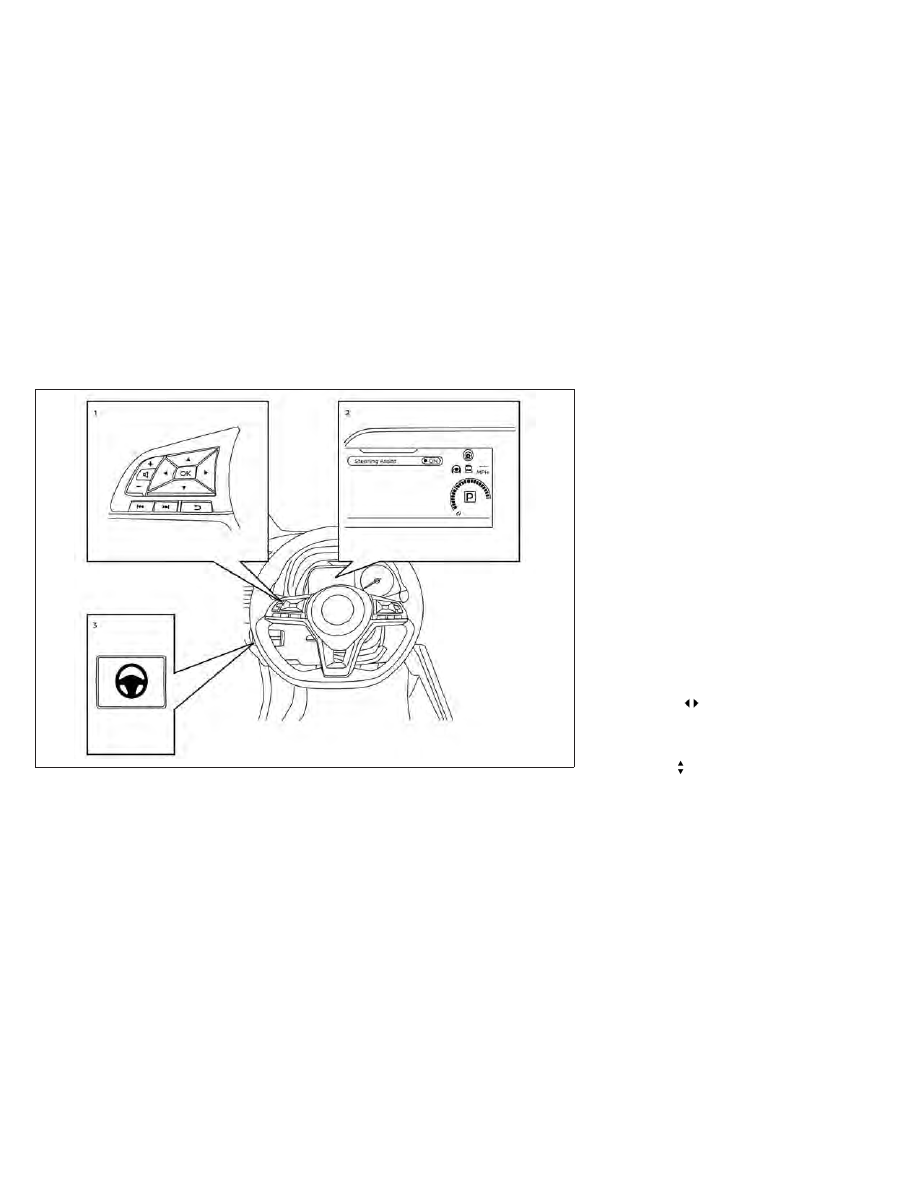Nissan Leaf (2022 year). Manual in english - page 27

HOW TO ENABLE/DISABLE THE
STEERING ASSIST
1. Steering-wheel mounted control (right)
2. Vehicle information display
3. Steering Assist switch
Use the following methods to enable or
disable the Steering Assist.
Steering Assist switch:
To turn the Steering Assist on or off, push
the Steering Assist switch (3) on the instru-
ment panel.
NOTE:
• When the Steering Assist switch is
used to turn the system on or off, the
system remembers the setting even if
the power switch is cycled. The switch
must be pushed again to change the
setting to on or off.
• The Steering Assist switch changes the
status of the “Steering Assist” selection
made in the “Settings” screen in the
vehicle information display.
Setting
in
the
vehicle
information
display:
1. Press the
button on the steering
wheel (1) until “Settings” displays in the
vehicle information display (2) and then
press the OK button (1).
2. Use the
button (1) to select “Driver
Assistance.” Then press the OK button
(1).
LSD4117
5-102
Starting and driving